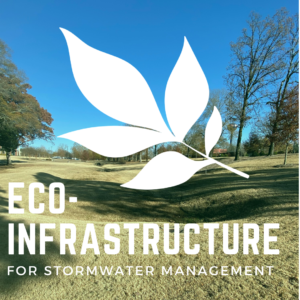About the 3R’s Recurring Column
Waste makes up a major part of the current American lifestyle. On average, a person in the U.S. throws away 4.6 pounds of solid waste per day (Center for Sustainable Systems Factsheets 2008, 1) and for every pound of household waste, 40 to 70 pounds of industrial waste was generated during its production (Rogers 2005, 4). Yet, in nature, there is no waste and no ‘away’ where things can be thrown. The idea of waste is a human construct and in an ideal world, our waste could be useful to other parts of the Earth’s ecological system: no longer “waste” and rather something useful somewhere else in the system.
The impact human “waste” has made on the environment is nearly inconceivable and reaches beyond unsightly and smelly landfills. The gas given off by landfills consists of about 50% carbon dioxide, 50% methane, and less than 1% other organic compounds (Maczulak 2010, 26). Methane is a highly potent greenhouse gas that has more than 80x the warming power of CO2 over the first 20 years it is in the atmosphere. United States landfills produce one-third of the methane emitted in the country and are the single largest methane-producing source of the US. To manage these sights, some landfills will burn their methane to convert it to CO2, to reduce the impact on the atmosphere. Others, currently about half the methane produced by US landfills, will be captured to generate power. Yet, even this solution requires methane to be burned which can create additional dioxins put into the atmosphere. The bottom line is once waste makes it to the landfill, there aren’t many options to significantly reduce the environmental impact. This is why the waste management hierarchy is so important.

Figure 1: Waste Management Hierarchy
A waste management hierarchy is a framework for minimizing waste streams. The steps in the waste hierarchy most familiar to nonprofessionals are the reduce, reuse, and recycle methods, sometimes referred to as the 3Rs. “Reduce” is the prevention of waste from being generated in the first place and the most preferable strategy. Reuse minimizes the generation of waste. Recycling is the last effort of waste management in the form of producing new materials from old materials. It is the lowest priority of the three (Fig. 1).
This semester the Office of Sustainability will have a recurring newsletter column breaking down each of these categories (Reduce, Reuse, Recycle) and shed light on waste management in the United States and beyond. Throughout the semester we will be familiarizing ourselves with key terms, fast facts, and community resources. We can all be better waste managers!
Please email the Office of Sustainability Project Manager Kathryn Kidd if you would like to share information related to this topic.
Recycling: The Siren of Sustainability
Much like the sirens who lure sailors out to sea, recycling has guided the public’s awareness toward environmental issues. One of the greatest benefits of recycling is its ability to open people up to the world of sustainability; acting as the first step in many people’s waste management journeys.
Recycling is a waste management method that has some improvements over landfilling and incineration. Recycling takes what materials it can from the waste stream and reuses it in some way. Reprocessing material and returning it to the supply chain can use less energy and generate less additional waste than producing new material. Even so, recycling ALWAYS requires energy inputs and machinery, losses occur at every stage, and materials can never be recycled 100 percent.
Some benefit of recycling is that it uses less water and energy, releases less pollution, and emits less carbon dioxide as compared to using virgin materials. Additionally, because many people have curbside recycling or visit locations with recycling, it is often the first contact many people have with topics of sustainability and waste management. Recycling provides the platform for other sustainability initiatives to be seen. However, recycling does have some intrinsic shortcomings. Firstly, materials collected in curbside recycling are only recycled if facilities are available and a market can be found for the materials. Recycling is energy-intensive, and it demands lengthy transport with additional energy consumption and greenhouse gas emissions. Up to 80% of America’s electronic waste is exported to developing countries, where environmental and worker protection laws and enforcement are less strict (Robertson, 2021)! While there can be energy savings, recycling still consumes more energy than either reusing a product or not producing it in the first place.
This is to say that while recycling is still very important, there are other steps to take before deciding to recycle your waste. Continue to follow our newsletter this semester to learn more about the Reusing and Reducing methods of waste management.
Reduce, Reuse, Recycle Campaign Fast Facts (Robertson, 2021)
- Landfills produce a third of the methane emitted in the US and are the single largest methane source
- Junk mail consumes 100 million trees per year and as much energy as 3 million cars. Visit https://www.consumer.ftc.gov/articles/how-stop-junk-mail to learn “How to stop junk mail”
- 1988 the Society of Plastics Industries developed the idea of assigning a number to each of 9 grades of plastic and inserting those numbers inside the recycling logo.
- Industrial waste makes up around 76% of waste volume in the US (Leonard, 2010)
- 80% of the US electronic waste is exported to developing countries, where environmental and worker protection laws and enforcement are less strict.
Community Resources:
- Ole Miss Recycling Guide: https://sustain.olemiss.edu/recycle/
- Lafayette County Solid Waste & Recycling Information: https://lafayettems.com/solid-waste-recycling/
Sources:
Center for Sustainability Systems Factsheets. Municipal Solid Waste. Ann Arbor: University of Michigan, 2008. http://css.snre.umich.edu/facts/.
Leonard, Annie. The Story of Stuff. New York: Free Press, 2010
Maczulak, Anne. Waste Treatment: Reducing Global Waste. New York: Facts on File, 2010.
Robertson, Margaret. Sustainability principles and practice. Routledge, 2021.
Rogers, Heather. Gone Tomorrow: The Hidden Life of Garbage. New York: The New Press, 2005.
-Story by OOS Project Manager Kathryn Kidd


